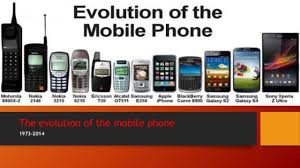The Evolution of Smartphone Design: Trends and Innovations
The smartphone has undergone a remarkable transformation since its inception, evolving from a simple communication device into a powerful, multifunctional tool that shapes daily life. Over the years, smartphone design has continuously adapted to new technologies, shifting consumer preferences, and advances in manufacturing. Today, smartphones are more than just gadgets for making calls or sending texts—they are personal assistants, entertainment hubs, workstations, and cameras all rolled into one.
This article explores the evolution of smartphone design, from the early days of mobile phones to the cutting-edge innovations shaping the future. We will look at the major design trends that have defined each era, the technological advancements driving innovation, and what we can expect in the coming years.
1. The Birth of the Smartphone
The concept of a smartphone first began to take shape in the early 1990s. Before then, mobile phones were bulky, rudimentary devices with limited functionality. The IBM Simon, introduced in 1992, is often credited as the world’s first smartphone. It featured a touch screen, email capabilities, and even a basic calendar—an early glimpse of the multifunctionality that would later define smartphones. However, its design was far from what we consider sleek today; it was large and cumbersome, with a primitive user interface by modern standards.
It wasn’t until 2007, when Apple introduced the first iPhone, that the smartphone revolution truly began. The iPhone set a new standard for smartphone design with its full touch screen interface, eliminating the physical keyboard that had been a staple of devices like the BlackBerry. This innovation marked the beginning of the modern smartphone era, where form and function became inseparably linked.
2. Minimalist Design and the Death of Physical Buttons
One of the most significant design shifts in smartphones has been the move towards minimalism. Early smartphones, such as the BlackBerry and early Android models, were equipped with physical keyboards, navigation buttons, and large bezels around the screen. These features were necessary given the limited touch screen technology of the time, but they made devices bulkier and less aesthetically pleasing.
The launch of the iPhone popularized the idea of a nearly all-screen device, relying on a capacitive touch screen for navigation. This design philosophy quickly caught on, and smartphone manufacturers raced to minimize bezels and eliminate buttons. The introduction of on-screen keyboards, combined with touch-based gestures, further streamlined the design.
By 2017, with the release of the iPhone X, Apple ditched the iconic home button entirely, ushering in the era of truly bezel-less displays. Samsung, Huawei, and other Android manufacturers followed suit, introducing curved displays and fingerprint sensors embedded within the screen, pushing the envelope of minimalist design. Today, phones with physical buttons are virtually extinct, with the focus entirely on maximizing screen space.
3. The Rise of Edge-to-Edge Displays
One of the most defining trends in smartphone design over the last decade has been the push for edge-to-edge displays. As screen technology improved, smartphone manufacturers sought to maximize the display area without increasing the overall size of the device. This led to the development of phones with minimal bezels and, in some cases, completely curved displays that wrap around the sides of the phone, as seen in Samsung’s Galaxy Edge series.
The quest for more screen real estate also led to creative solutions for housing front-facing cameras and sensors. Early attempts to achieve this design involved notches, as seen on the iPhone X and several Android devices. However, notches quickly evolved into smaller “teardrop” shapes, and more recently, the hole-punch camera design became popular, where a small, circular cutout in the screen houses the camera.
The future of edge-to-edge displays lies in under-display camera technology, which removes the need for any visible camera cutouts. Brands like ZTE and Xiaomi have already introduced prototypes with cameras hidden beneath the screen, signaling the next evolution in smartphone design.
4. Materials and Build Quality: From Plastic to Premium
Smartphone design has also evolved significantly in terms of materials and build quality. Early smartphones were predominantly made of plastic, which made them lightweight but often gave them a cheap feel. As consumers began demanding more premium-feeling devices, manufacturers responded by incorporating metal and glass into their designs.
Apple’s iPhone 4, released in 2010, was one of the first smartphones to use a combination of glass and stainless steel, setting a new standard for build quality. This trend was quickly adopted by other manufacturers, leading to a wave of premium smartphones that felt as luxurious as they looked.
Today, glass-and-metal construction is standard in flagship devices. While glass offers a sleek, premium aesthetic, it also enables wireless charging, which has become a common feature in high-end smartphones. However, glass is also more fragile than plastic, leading manufacturers to develop tougher materials such as Corning’s Gorilla Glass, which offers improved scratch resistance and durability.
In recent years, there has been growing interest in sustainable materials and eco-friendly design. Brands like Fairphone are pioneering smartphones made from ethically sourced and recyclable materials, responding to consumer demand for more environmentally responsible products.
5. The Foldable Phone Revolution
One of the most exciting innovations in smartphone design is the emergence of foldable phones. Foldable technology represents a major departure from the traditional slab design, offering users a larger screen in a compact form factor. The Samsung Galaxy Fold, Huawei Mate X, and Motorola Razr are among the first foldable devices to hit the market, featuring flexible OLED screens that can bend and fold without breaking.
Foldable phones have the potential to transform the way we use smartphones by providing tablet-like experiences in a pocket-sized device. While the first generation of foldable phones was met with some skepticism due to concerns about durability and high price points, the technology has improved significantly. Samsung’s Galaxy Z Fold series, for example, has been praised for its engineering advancements, including stronger hinges and more resilient displays.
As foldable technology matures, we can expect more manufacturers to join the race, and the prices of these devices will likely come down. Foldable phones offer a glimpse into the future of smartphone design, where versatility and multi-functionality are prioritized.
6. 5G and the Influence on Smartphone Design
The rollout of 5G networks is another factor driving changes in smartphone design. 5G technology promises faster download speeds, lower latency, and improved connectivity, but it also requires more sophisticated hardware to support these capabilities.
5G smartphones often need larger batteries to accommodate the power demands of the new technology, as well as advanced cooling systems to prevent overheating during intensive tasks like streaming high-definition content or playing graphics-heavy mobile games. This has led to slightly bulkier devices, although manufacturers are working to minimize the impact on overall form factors.
Additionally, the need for more antennas to support 5G frequencies has influenced the internal design of smartphones, requiring more intricate engineering to fit everything into increasingly slim bodies. Over time, as 5G technology becomes more efficient, we can expect smartphones to become thinner and more compact once again.
7. The Role of AI in Shaping Smartphone Design
Artificial intelligence (AI) is playing an increasingly important role in the design and functionality of smartphones. AI-powered features such as facial recognition, voice assistants, and camera enhancements have become standard in modern smartphones, and they are influencing both hardware and software design.
AI algorithms are being used to optimize battery life, enhance security, and improve overall user experience. For example, AI-driven cameras can automatically adjust settings based on lighting conditions, recognize scenes, and even edit photos in real-time. AI is also being used in app design, offering more intuitive interfaces and personalized experiences.
As AI continues to evolve, we can expect it to influence smartphone design even further, particularly in areas like augmented reality (AR) and virtual reality (VR), where AI will play a crucial role in creating immersive experiences.
8. Sustainability and Modular Design
With growing awareness of electronic waste and the environmental impact of smartphones, sustainability is becoming an important consideration in smartphone design. Companies like Fairphone are pioneering modular smartphones, which are designed to be easily repaired and upgraded, extending their lifespan and reducing electronic waste.
Modular design allows users to replace individual components, such as the battery or camera, without having to buy a whole new device. This not only reduces waste but also gives consumers more control over the functionality of their phones. While modular smartphones are still a niche market, the growing demand for sustainable products could push more manufacturers to adopt similar designs in the future.
9. The Future of Smartphone Design
The future of smartphone design is filled with exciting possibilities. Advances in flexible and foldable display technology will likely lead to more versatile devices, while AI will continue to enhance user experiences. We can also expect to see further integration of AR and VR capabilities, turning smartphones into powerful tools for immersive digital experiences.
In addition, the push for sustainability will influence both the materials and design strategies used by manufacturers. As consumers become more conscious of the environmental impact of their purchases, smartphone companies will need to prioritize eco-friendly designs and practices.
Ultimately, the evolution of smartphone design will continue to be driven by the desire for more functionality, convenience, and personalization, ensuring that smartphones remain at the forefront of technological innovation for years to come.
Conclusion
The evolution of smartphone design reflects broader technological trends and consumer demands. From the minimalist, buttonless designs of the last decade to the futuristic foldable and AI-driven devices of today, smartphones are continually pushing the boundaries of what is possible in both form and function. As we look to the future, innovations in materials, AI, 5G, and sustainability will shape the next generation of smartphones, ensuring they remain indispensable tools in our daily lives.


